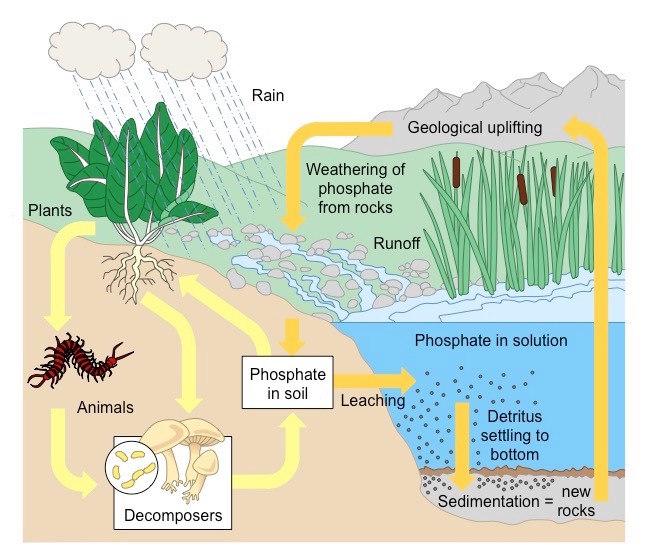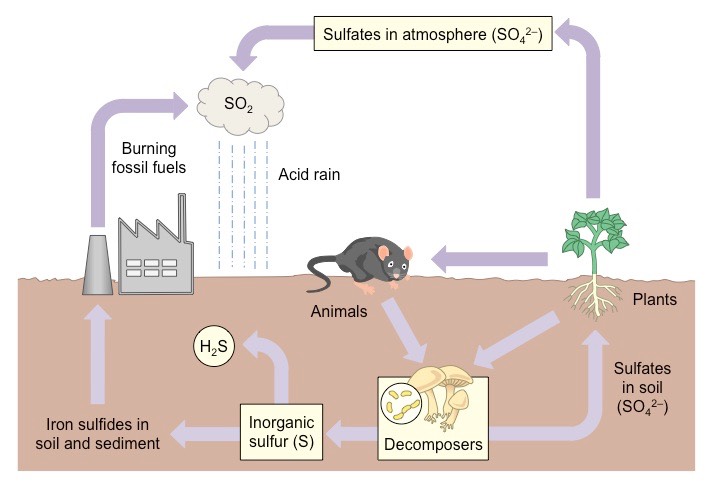A biogeochemical cycle is a pathway by which a chemical substance moves through the biotic and abiotic spheres of the Earth
- While the carbon cycle is the most well known pathway, other biogeochemical cycles are equally important to life on Earth
- These other biogeochemical processes include the nitrogen cycle, phosphorus cycle and sulphur cycle
Nitrogen Cycle
- The majority of the Earth’s atmosphere is composed on nitrogen gas (N2 = ~79%) however it is chemically inert in this form
- Atmospheric nitrogen must be chemically processed by nitrogen-fixing bacteria in order to be used by plants
- Plants absorb nitrogen from the soil as nitrite ions, nitrate ions or ammonium, while animals consume these products from plants
- When organisms die, nitrogen is in an organic form (proteins) and must be converted back into inorganic form (ammonification)
- Nitrogen in the soil is converted back into inert nitrogen gas by denitrifying bacteria

Phosphorus Cycle
- Phosphorus is a primary component of DNA and energy-storing molecules (ATP), and is present in membranes (phospholipids)
- Phosphorus-based compounds are usually solid and hence phosphorus is not found as a gas in the atmosphere
- Phosphorus (as phosphates) is incorporated and fixed to soil particles but may be released by the weathering of rocks
- Phosphates may enter the waterways via erosion and leaching

Sulphur Cycle
- Sulphur is an essential component of living organisms, being a constituent part of many proteins and enzyme cofactors
- Sulphur in the air and soil may be oxidised to form sulphates (SO42–)
- Sulphates are reduced by plants and bacteria and hence sulphur becomes incorporated into organic molecules
- Sulphur within the soil can also be mineralised into inorganic forms and incorporated with metals (e.g. iron sulphide)
- Burning of fossil fuels releases sulphur as sulphur dioxide (SO2), which is an enabling component of acid rain

